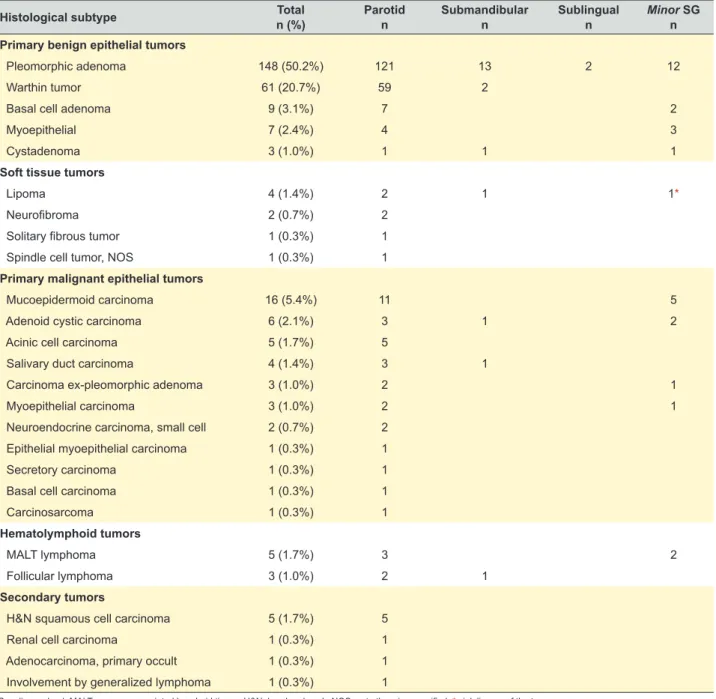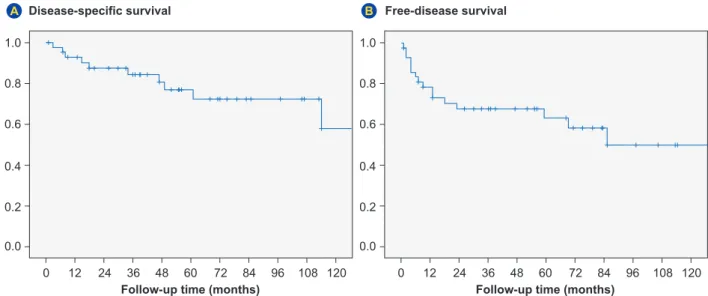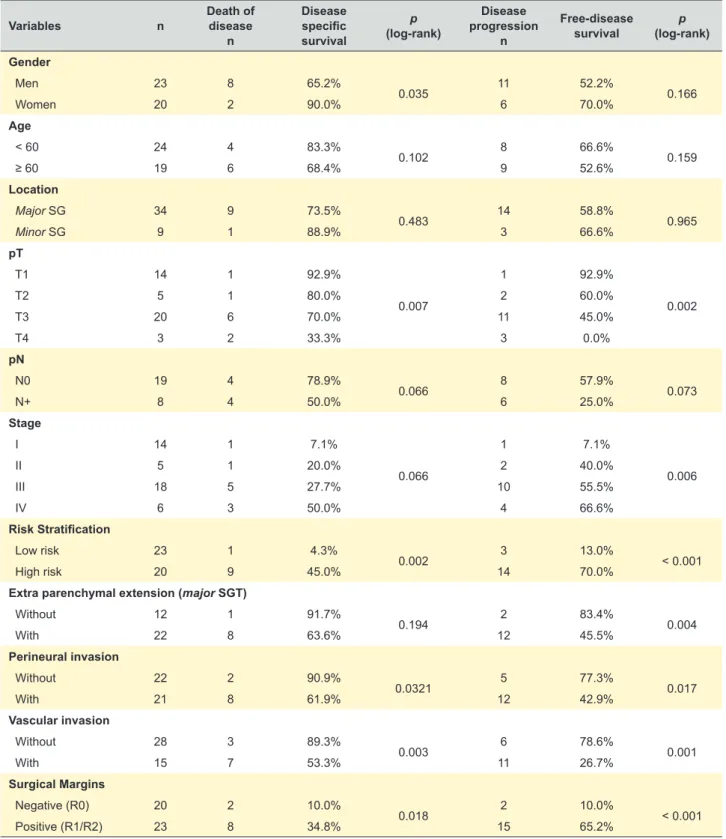Histological Subtypes and Clinical Behavior Evaluation of Salivary Gland Tumors
Texto
Imagem



Documentos relacionados
The reported cases of FNAB found in the literature involve, for the most part, lesions of the head and neck and thyroid and salivary gland tumors which are benign or
In the infancy, it has been reported that 35% of salivary gland tumours are malignant and between these mucoepidermoid carcinoma is the most frequent, while the occurrence of
There was no clear association between USP44 expression and DNA ploidy status of the malignant salivary gland tumours, suggesting that aneuploidy is independent of the
Todo dia chegam novos originais, toda semana aparecem poetas inéditos, o mundo é pequeno, tem muita gente boa escrevendo, e cada vez mais a cor- respondência inclui demandas de
Figure 1- Myoepithelial carcinoma, cytology. Smears have rich cellularity and are dominated by polygonal pleomorphic tumor cells with abundant delicate cytoplasm. Nuclear atypia
(2013), injected 10 U and 5 U of botulinum toxin type A in submandibular glands of rabbits and showed a reduction in size of acinar cells, fibrosis, ultrastructural changes in
1 Warthin tumor (papillary cystadenoma lymphoma- tosum) is the second most common benign tumor of the parotid gland, representing 5 to 12% of all tumors of the salivary glands.. 2 –
Abstract Introduction Adenoid cystic carcinoma (ACC) is one of the most frequent malignant salivary gland tumors, which commonly affects the minor salivary glands of the mouth and